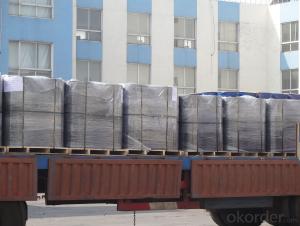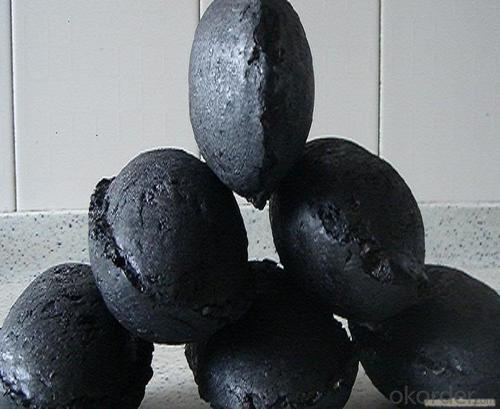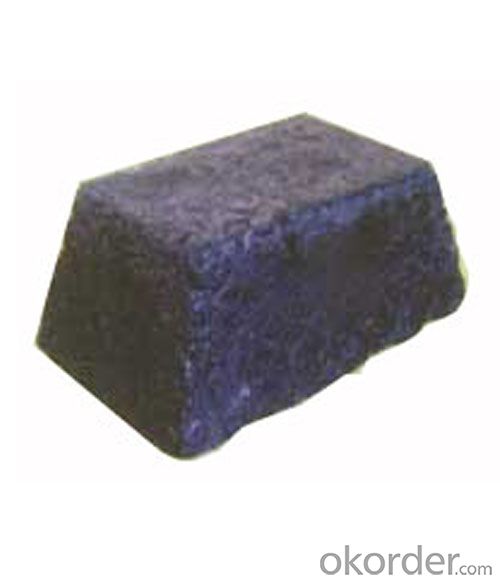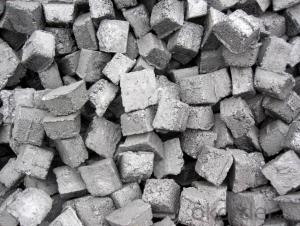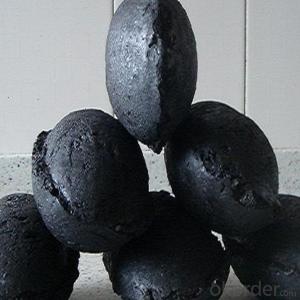Carbon Electrode Paste -Low Ash4-9 CNBM
- Loading Port:
- Tianjin
- Payment Terms:
- TT OR LC
- Min Order Qty:
- 0 m.t.
- Supply Capability:
- 100000 m.t./month
OKorder Service Pledge
OKorder Financial Service
You Might Also Like
Packaging & Delivery
| Packaging Details: | 1.1MT jumbo bag or as your requirment |
| Delivery Detail: | 15 days after receiving advance payment or LC |
Product Description
Carbon Electrode Paste is a self-baking electrode used in submerged arc furnaces for delivering power to the charge mix. Electrode Paste is added to the top of the electrode column in either cylindrical or briquette form. As the paste moves down the electrode column the temperature increase causes the paste to melt and subsequently bake forming a block of electrically conductive carbon. Electrode Paste is essentially a mix of Electrically Calcined Anthracite (ECA) or Calcined Petroleum Coke (CPC) with Coal Tar Pitch.
Spcifications
1:carbon eletrode paste
2:for ferroalloy,calcium carbide manufacture
3:HS 3801300000,YB/T5212-1996,ISO9001:2008
Graphite/Carbon Electrode Paste
Specification/Item |
|
|
|
|
|
|
Ash | 4.0%max | 5.0%max | 6.0%max | 7.0% Max | 9.0% Max | 11.0% Max |
VM | 12.0%-15.5% | 12.0%-15.5% | 12.0%-15.5% | 9.5.0%-13.5% | 11.5%-15.5% | 11.5%-15.5% |
Compress Strength | 18.0Mpa Min | 17.0Mpa Min | 15.7Mpa Min | 19.6Mpa Min | 19.6Mpa Min | 19.6Mpa Min |
Specific Resistance | 65μΩm Max | 68μΩm Max | 75μΩm Max | 80μΩm Max | 90μΩm Max | 90μΩm Max |
Bulk Density | 1.38G/CM3 Min | 1.38G/CM3 Min | 1.38G/CM3 Min | 1.38G/CM3 Min | 1.38G/CM3 Min | 1.38G/CM3 Min |
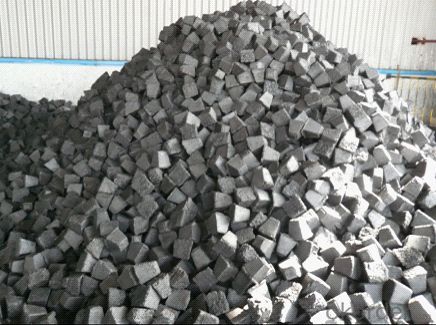
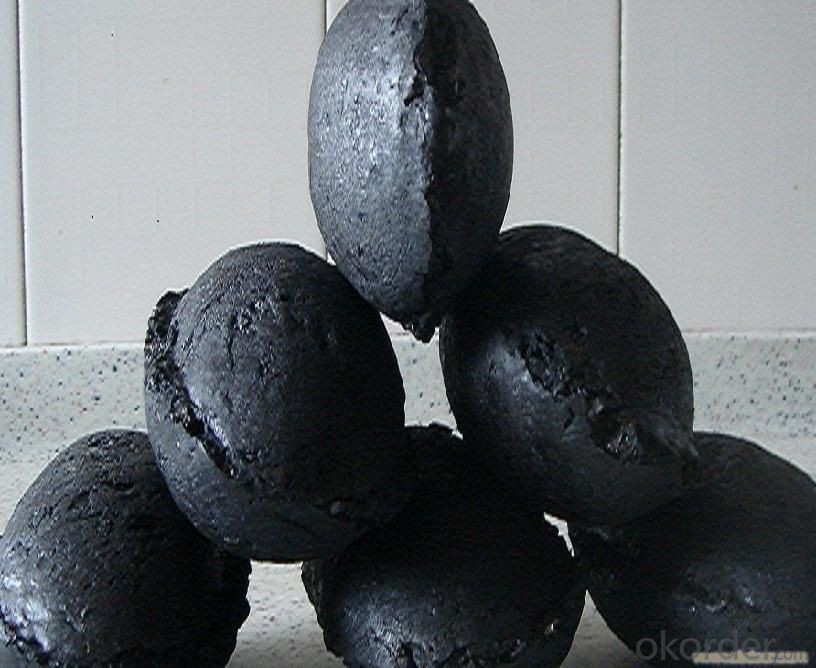
- Q: I heard that 85 of the furnace rock carbon harmony, and the result that I use advanced strengthening machine when I want to give high-grade furnace rock carbon, this how ah?
- This can be purchased in previous events, but not at the moment, but after all, there has been a high-level reinforcement machine, which is expected to come out later
- Q: What is the role of carbon 60 in industry? Can it be interchanged with the chemical properties of carbon? What is the chemical structure of carbon 60?
- Used to strengthen metals; used as a new catalyst for storage of gases
- Q: What are the potential uses of carbon nanomaterials in medicine?
- Carbon nanomaterials have shown great promise in the field of medicine due to their unique properties. One potential use of carbon nanomaterials is in drug delivery systems. Their high surface area-to-volume ratio allows for efficient loading and release of therapeutic agents, enabling targeted and controlled drug delivery. This could lead to more effective treatments with reduced side effects. Another potential use is in medical imaging. Carbon nanomaterials, such as carbon nanotubes and graphene, have excellent optical and electrical properties that can enhance imaging techniques like MRI and CT scans. This could improve the accuracy and resolution of medical imaging, enabling better diagnosis and monitoring of diseases. Carbon nanomaterials also have antibacterial properties which can be utilized in wound healing and infection control. Nanostructured carbon materials can effectively kill bacteria and prevent the formation of biofilms, which are often resistant to conventional antibiotics. This could potentially revolutionize the treatment of infections, especially those caused by antibiotic-resistant bacteria. Furthermore, carbon nanomaterials have the potential to be used in tissue engineering and regenerative medicine. Their biocompatibility, mechanical strength, and electrical conductivity make them suitable for creating scaffolds to support tissue growth and promote regeneration. Carbon nanomaterials could also be used to enhance the electrical stimulation of tissues, aiding in nerve regeneration and improving the functionality of artificial organs. In addition to these applications, carbon nanomaterials have been explored for their ability to detect and monitor diseases at an early stage. Their unique electronic and optical properties can be utilized in biosensors and diagnostic devices, allowing for sensitive and specific detection of biomarkers associated with various diseases. While the potential uses of carbon nanomaterials in medicine are vast, it is important to note that further research and development are required to ensure their safety, efficacy, and long-term effects. Regulatory considerations and ethical concerns surrounding the use of nanomaterials in medicine also need to be addressed. Nonetheless, the promising capabilities of carbon nanomaterials offer hope for more advanced and personalized medical treatments in the future.
- Q: What are the impacts of carbon emissions on the stability of mangroves?
- Mangroves, crucial coastal ecosystems, are negatively affected by carbon emissions, which have detrimental effects on their stability. The increased levels of carbon dioxide (CO2) in the atmosphere contribute to global warming, resulting in rising sea levels and more frequent and intense storms. These changes directly impact mangroves in several ways. Firstly, global warming causes rising sea levels, leading to more frequent inundation of mangroves. As the sea level rises, saltwater intrusion occurs more often, disrupting the delicate balance of saltwater and freshwater in mangrove ecosystems. This can displace and cause a decline in mangroves, as they struggle to adapt to the changing conditions. Secondly, the increased frequency and intensity of storms due to climate change can physically damage mangroves. Mangroves act as a natural barrier, absorbing wave energy and protecting coastlines from storm surges. However, stronger storms test the resilience of mangroves, potentially uprooting or destroying them, leaving the coastlines vulnerable to erosion and further damage. Additionally, carbon emissions are linked to ocean acidification, which occurs when excess CO2 is absorbed by the oceans. Acidic waters negatively impact the growth and development of mangroves, as they are sensitive to changes in pH levels. This can lead to reduced productivity, stunted growth, and even death of mangroves, further destabilizing these ecosystems. The stability of mangroves is crucial for both the environment and human populations. Mangroves provide essential habitats for various species, acting as a nursery for fish and supporting biodiversity. They also serve as carbon sinks, absorbing significant amounts of CO2 from the atmosphere. Furthermore, mangroves play a vital role in coastal protection, mitigating erosion, storm surges, and flooding impacts. To mitigate the effects of carbon emissions on mangrove stability, it is crucial to reduce greenhouse gas emissions and limit global warming. This can be achieved by adopting clean energy sources, implementing conservation efforts, and initiating reforestation projects. Equally important is the protection and restoration of mangrove habitats, as this helps maintain their stability and resilience to climate change impacts.
- Q: How is carbon used in the agricultural industry?
- Carbon is used in the agricultural industry in various ways. One of the main uses is as a fertilizer in the form of organic matter, such as compost or manure, which improves soil fertility and structure. Carbon is also used in carbon sequestration practices, where plants absorb carbon dioxide from the atmosphere and store it in the soil, helping to mitigate climate change. Additionally, carbon-based pesticides and herbicides are used to control pests and weeds in crop production. Overall, carbon plays a significant role in promoting sustainable and efficient agricultural practices.
- Q: What is carbon sequestration?
- Carbon sequestration is the process of capturing and storing carbon dioxide (CO2) from the atmosphere in order to mitigate climate change. It involves various methods, such as planting trees and enhancing natural ecosystems, as well as using technology to capture and store CO2 emissions from industries and power plants. The goal is to reduce the amount of CO2 in the atmosphere, preventing it from contributing to global warming and its associated impacts.
- Q: What is the relationship between carbon emissions and deforestation?
- The relationship between carbon emissions and deforestation is closely intertwined. Deforestation refers to the permanent removal of trees and vegetation in forests, usually to make way for agricultural land, urban development, or logging. This process releases large amounts of carbon dioxide (CO2) into the atmosphere, contributing to greenhouse gas emissions and climate change. Trees play a crucial role in mitigating climate change as they absorb CO2 from the atmosphere through photosynthesis and store it in their tissues. When forests are cleared, this carbon storage capacity is lost, and the carbon previously stored in trees is released back into the atmosphere. Deforestation is estimated to be responsible for around 10% of global greenhouse gas emissions. Furthermore, the burning of forests, a common practice during deforestation, also contributes to carbon emissions. When trees are burned, the stored carbon is released as CO2, exacerbating the greenhouse effect. This is particularly significant in tropical regions where deforestation is prevalent, such as the Amazon rainforest. Conversely, reducing deforestation and promoting reforestation can help mitigate carbon emissions. By preserving existing forests and planting new trees, we can enhance carbon sequestration and reduce the amount of CO2 in the atmosphere. Forest conservation and restoration efforts are crucial components of global climate change strategies, as they not only help combat climate change but also preserve biodiversity and provide vital ecosystem services. In conclusion, the relationship between carbon emissions and deforestation is clear: deforestation leads to increased carbon emissions, while forest conservation and reforestation efforts help reduce carbon dioxide levels in the atmosphere. It is essential to prioritize sustainable land-use practices and support initiatives that protect and restore forests to mitigate climate change effectively.
- Q: How does carbon impact the prevalence of floods?
- Flood prevalence is not directly affected by carbon, but its role in influencing climate change is crucial, as it can impact the occurrence and severity of floods. Carbon dioxide (CO2), a greenhouse gas, primarily traps heat in the Earth's atmosphere, resulting in global warming. This global temperature increase has various consequences, including an escalation in extreme weather events like floods. As the Earth warms, the atmosphere can hold more moisture, increasing the likelihood of heavy precipitation events. This leads to more intense rainfall, causing rivers and water bodies to overflow and causing floods. Additionally, warmer temperatures can contribute to the melting of glaciers and ice caps, raising sea levels and intensifying the impact of floods, especially in coastal regions. Moreover, human activities such as burning fossil fuels and deforestation are the primary drivers of climate change, leading to carbon emissions. By reducing our carbon footprint and transitioning to cleaner energy sources, we can help mitigate the effects of climate change and potentially decrease flood prevalence in the long run. It's important to note that although carbon emissions significantly contribute to climate change, floods are not solely caused by them. Other natural factors, such as rainfall patterns, topography, and land use, also have important roles in determining flood risks.
- Q: What are the properties of carbon-based lubricants?
- Hydrocarbon-based lubricants, or carbon-based lubricants, possess a multitude of unique characteristics that contribute to their high effectiveness in a variety of applications. To begin with, these lubricants demonstrate exceptional thermal stability, enabling them to maintain their lubricating qualities even when subjected to elevated temperatures. This particular feature holds significant importance in industries like aerospace and automotive, where components often operate under extreme conditions. In addition, carbon-based lubricants exhibit outstanding lubricity, effectively reducing friction and wear between moving parts. This attribute is of utmost importance in machinery and equipment, as minimizing friction is crucial for ensuring smooth operation and preventing damage. Furthermore, these lubricants have the ability to bear heavy loads, preventing metal-to-metal contact that can result in premature wear and failure. Furthermore, carbon-based lubricants demonstrate excellent resistance to oxidation, effectively preventing the formation of harmful sludge and deposits that could potentially disrupt machinery performance. This characteristic extends the lifespan of the lubricant, guaranteeing long-term effectiveness and reducing the frequency of lubricant replacements. Moreover, these lubricants possess low volatility, meaning they have a minimal tendency to evaporate. This particular quality proves advantageous in applications where minimizing lubricant loss is essential, such as in sealed systems or high-temperature environments. Additionally, carbon-based lubricants generally exhibit compatibility with a wide range of materials, including metals, plastics, and elastomers. This compatibility ensures that the lubricant does not cause any damage or degradation to the surfaces it comes into contact with, allowing for versatile use across various industries and applications. All in all, the unique properties of carbon-based lubricants, including thermal stability, lubricity, load-carrying capacity, oxidation resistance, low volatility, and material compatibility, make them highly desirable for a wide array of lubrication needs, spanning from automotive and industrial machinery to aerospace and marine applications.
- Q: What is the primary source of carbon monoxide in the atmosphere?
- The incomplete combustion of fossil fuels stands as the main contributor to carbon monoxide found in the atmosphere. Whenever coal, oil, or natural gas is burned for energy generation, transportation purposes, or industrial procedures, carbon monoxide is inevitably discharged into the air. Despite natural sources like volcanic eruptions and forest fires having the potential to augment the presence of carbon monoxide in the atmosphere, the majority of emissions can be firmly linked to human activities. As a result, addressing carbon monoxide is crucial in safeguarding both human health and the environment.
Send your message to us
Carbon Electrode Paste -Low Ash4-9 CNBM
- Loading Port:
- Tianjin
- Payment Terms:
- TT OR LC
- Min Order Qty:
- 0 m.t.
- Supply Capability:
- 100000 m.t./month
OKorder Service Pledge
OKorder Financial Service
Similar products
Hot products
Hot Searches
Related keywords
